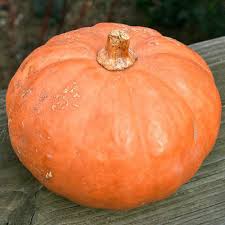
APRIL GARDENING CALENDAR GENERAL
This winter was a “longie” with lots of snow, a situation which voles love! In our market garden we discovered damage from voles on Campanula medium (Canterbury bells)—just the ones stored in pots in sawdust, but not those in the ground. Also some potted Primulas, strawberries, and Echinaceas were completely eaten. It was the same case with these last few; plants in the ground were unharmed, those in pots in sawdust were eaten. It may be because plants all stored together serve a sort of “banquet” for voles, while those in the ground, mixed in with other plants are harder for the little critters to find. I am experimenting with inter-planting Fritillaria imperialis (Crown Imperials) with plants that tend to be vole favorites, to see if they will help deter them. Fritillarias are very odorous, and rodents do not eat them.
April tasks:
Finish pruning and grafting of fruit trees if not already done. Plant grapes and other fruiting perennials, shrubs and vines; fertilize and prune raspberries and blackberries. Start many flowers inside for transplanting out and direct sow the last hardy annuals. Direct sow many vegetables late in the month and into May. April is characterized by ups and downs in temperature—watch for frosts! Protect frames at night and admit air daily. Place row covers on newly transplanted, slightly tender plants.
VEGETABLES
If not done already, sow indoors, for transplanting out early in the month: basil, cabbage, celery, tomatoes, broccoli, cauliflower, kohlrabi, head lettuce, artichokes, Brussels sprouts, Asian cabbage, leeks, greens. After the 15th, sow watermelon, cantaloupe, squash, pumpkins and cucumbers into peat pots for easy transplanting.
Direct sow these outdoors once weather permits and soil temperatures are above 45 degrees: beets, arugula, carrots, caraway, celery, chervil, chives, cilantro, dill, fennel, thyme, oregano, sorrel, collards, mache, fava beans, cress, Jerusalem artichokes, kale, kohlrabi, cabbage, cauliflower, leeks, lettuce, mustard greens, rhubarb, turnip greens, onions, parsley, parsnips, peas, potatoes, radishes, salsify, scallions, spinach, Swiss chard. Sow corn (after the 20th).
Harden-off vegetables in frames, or by exposing them outdoors a few hours at a time. Transplant the following hardy vegetables outside around the middle of the month (they can take some light frost): asparagus, broccoli, cabbage, cauliflower, Chinese cabbage, endive, leeks, lettuce, onion sets and plants, Asian greens, parsley.
FLOWERS
Sow indoors April 1 for transplanting out: Chinese asters (Callistephus), Cerinthe, Celosia, Craspedia, Calendulas, annual Centaurea, Cleome, Cosmos, Cynoglossum, Eragrostis, Panicum, Pennisetum, and annual grasses. Late in the month: sow zinnias indoors.
Direct sow outdoors all month: annual alyssum Lobularia maritima), Bupleurum, carnations, pinks, sweet Williams, Cynoglossum, stocks, rose campion, wall flowers, Lychnis, lupines, lavateras, columbines, valerian, polyanthus, auriculas, Canterbury bells, hollyhocks, honeysuckles, rockets, honesty, fox gloves, snapdragons, sweet peas, poppies, larkspur, cornflowers, nigella, Lavatera, poppies, valerian, kiss-me-by-the-garden-gate, dill, morning glory, sweet peas and wildflowers.
Weed and clean borders. Divide perennials early in the month: carnations, Bellis, Achilleas, Asters, mums, Campanulas, Centranthus, Coreopsis, Dicentra, Dodecatheon, Echinops, Euphorbias, Gauras, Gaillardias, Gentians, Helianthus, hellebores, daylilies, Heucheras, Hostas, Lobelias, Papavers, Oenotheras, Phlomis, Monarda, Liatris, and Marrubiums.
Start dahlia tubers this month and make cuttings if possible.
Shade auricula primroses from intensifying spring sun. This is when auriculas need the most water, but remember— never waterlog the compost. The month of April is their peak bloom period and hybridizing can take place now. Shows are held this time of year.
FRUIT
By April 15, finish pruning /grafting/planting fruit trees; spray Bordeaux mix on fruit trees suffering from fire blight; check fruit trees for pests. Spray superior oil on dormant trees (before leaf out). Lime-sulfur will control anthracnose or blight on raspberries if applied when the buds first show silver, or on currants and gooseberries at bud break. Wait three weeks if you decide to spray lime-sulfur (use caution) as a fungicide on roses, lilacs, dormant shrubs, fruit trees, evergreens.
Weed fruit trees, strawberries, cane fruits. Set out apple pest traps two weeks before bud break.
TREES, SHRUBS AND ROSES
Lay out lawns by either direct-seeding or purchase turf and roll it out. If the weather gets windy and dry, water your new lawn frequently.
Finish transplanting roses and other shrubs (the earlier the better). Prune established roses after severe frosts. Cut out all dead and crossed wood, and seal the cuts with water-based glue to prevent the drilling wasps from destroying canes. Dress rose plants with Epsom salts, wood ashes, compost, manure, alfalfa meal, bone meal, kelp meal, bunt earth, spent hops, etc. , but keep fertilizers 2 inches away from the canes at the base of the plant.













